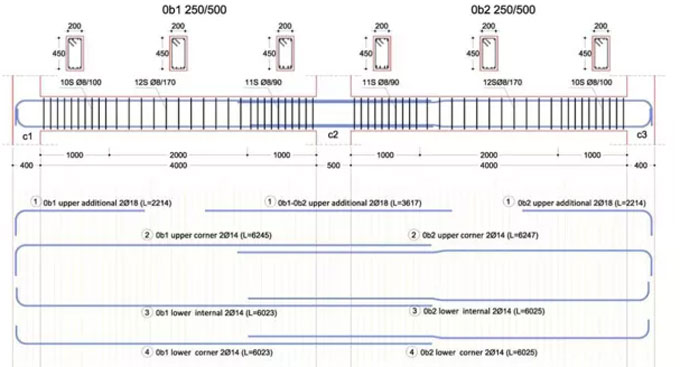
Some useful guidelines for designing rectangular and T-shape beam
Design Procedure Rectangular and T-shape Beam - Beam is defined as a horizontal or inclined structural member that extents a distance among one or more supports, and bears vertical loads across (transverse to) its longitudinal axis, as a girder, joist, purlin, or rafter.
Beams belong to structural elements which gather forces orthogonal to their axis and transfer them to their supports through deflecting (bending). If a beam faces significant axial forces it is termed as a beam-column.
In beams, proper analysis should be carried out on the bending moment, shear, and deflection.
If the bending moment operates on the beam, bending strain is generated. Internal stresses are mainly liable for the formation of resisting moment. Under positive moment, compressive strains in the top of the beam and tensile strains in the bottom of beam are generated.
The Concrete is weak in resisting tensile strength and not acceptable for flexure member by itself. The tension side of the beam may collapse prior to failure of compression side if the beam has to experience a bending moment devoid of the reinforcement.
To resolve this issue, steel reinforcement is provided on the tension side. The steel reinforcement withstands all tensile bending stress as tensile strength of concrete becomes zero with the formation of cracks.
Rectangular Beam: Guess the depth of beam with the ACI Code reference, minimum thickness unless consideration the deflection.
Take beam width (proportion of width and depth is about 1:2).
Workout self-weight of beam and design load.
Calculate factored load (1.4 DL + 1.7 LL).
Work out design moment (Mu ).
Calculate highest possible nominal moment for singly reinforced beam (fM n ).
Determine reinforcement type by making comparison between the design moment (M u ) and the utmost possible moment for the singly reinforced beam (fM n ). If fM n is below Mu, the beam is designed like a doubly reinforced beam otherwise the beam is designed with tension steel only.
Establish the moment capacity of the singly reinforced section. (concrete-steel couple).
Calculate the necessary steel area for the singly reinforced section.
Determine an essential residual moment, deducting the total design moment and the moment capacity of the singly reinforced section.
Calculate the supplementary steel area from the necessary residual moment.
Workout total tension and compressive steel area.
Design the reinforcement once the steel is selected.
Verify the actual beam depth and assumed beam depth.
To get more details, go through the following link onlinecivilforum.com


